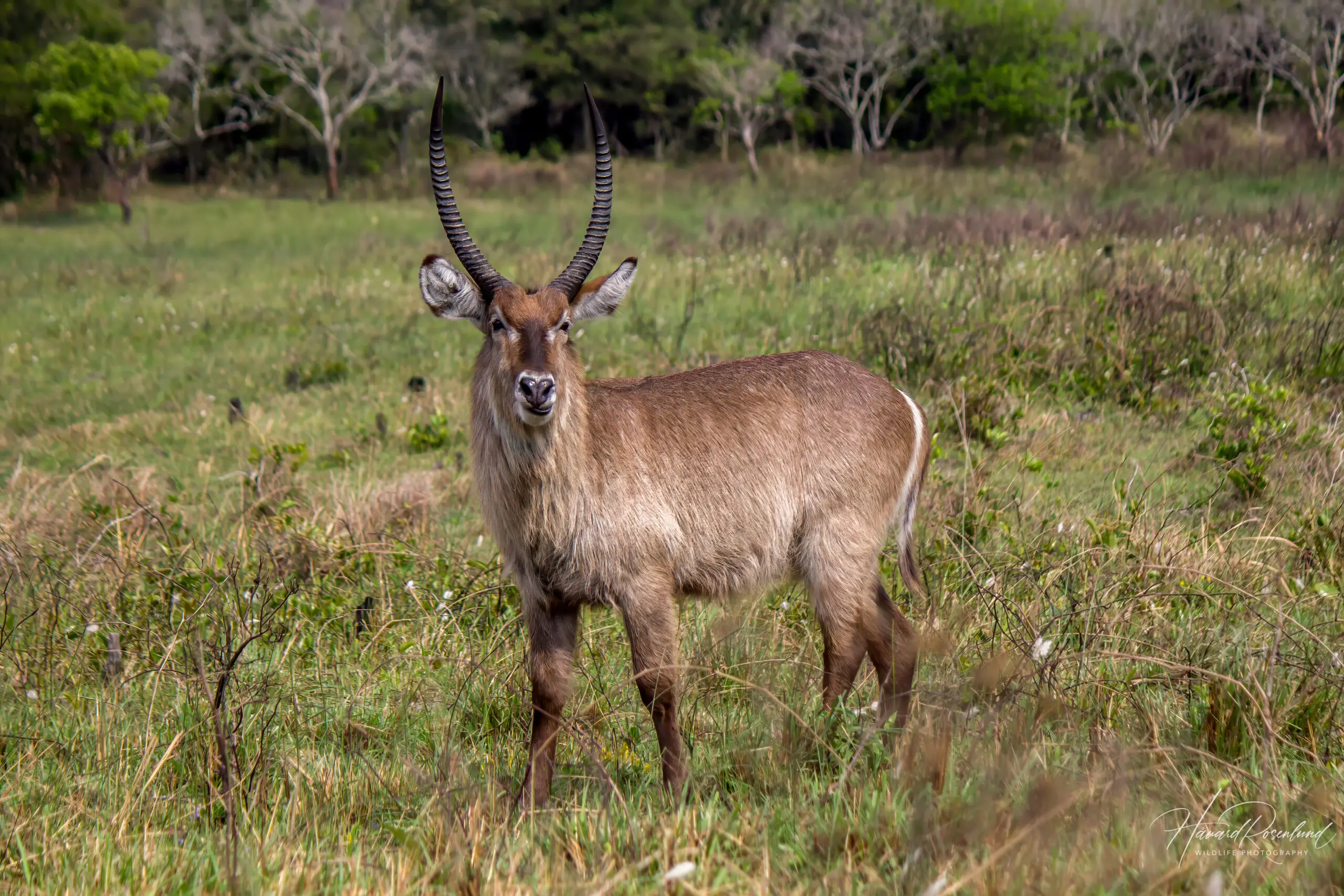Description
The waterbuck (Kobus ellipsiprymnus) is a large antelope species with a grey to reddish-brown shaggy coat. It can reach a height of 136 cm (54 in) at the shoulder and a weight of 262 kg (578 lb). Males are normally around 25 % larger than females. The waterbuck has white markings over the eyes, around its mouth and on the throat. Only the males have horns, which are curved, have a ringed appearance, and can reach a length of 100 cm (40 in).
There are two distinct subspecies of waterbuck, the common waterbuck (K. e. ellipsiprymnus) and the defassa waterbuck (K. e. defassa). They are distinguished on the white patches on the rump. The common waterbuck has an elliptical white ring on the rump, while the defassa waterbuck has two white patches on either side of the tail. The common waterbuck is found in along the eastern side of Africa, from South Africa to Somalia, while defassa waterbuck is found in Western Africa, Central Africa and parts of East Africa. Both subspecies occur in Kenya, Tanzania and Zambia.
Diet & habitat
Waterbucks are dependent on water and will generally stay in areas near permanent water sources. Waterbucks do not spend much time in water, but will readily jump into it to avoid predators. Preferred habitats are open savanna, riverine woodlands, and forests with adequate water availability. They are predominantly grazers but do also feed on leaves from trees and bushes. They are mostly active feeding in the early morning and at night and will rest during the hottest hours of the day.
Social behavior
Male waterbucks hold territories of around 1.2 km², which they will try to defend from other males. Fighting can break out and injuries can be fatal. Females live in larger groups of just a few animals to up to several hundred individuals. These groups have large home ranges and will pass through many male territories. When a group of females pass the territory of a male, he will try to keep them within his range and mate with any females that are in heat. Males seldom manage to hold females for longer periods.

Family group of common waterbuck. Notice the ring on their rumps @ Eastern Shores – iSimangaliso Wetland Park.
Reproduction
As waterbuck inhabit areas close to water it is often rich with resources. This means breeding and birthing can take place throughout the year. Gestation period for waterbuck is 280 days and generally a single calf will be born. Females often mate again just after 2-5 weeks of giving birth, making the waterbuck prone to increase rapidly in numbers.
A newborn calf his hidden away by the mother for the first 3 weeks and will be nursed for as long as 6-8 months. Young males often start bachelor groups before they are old enough to hold their own territory and females generally stay within the natal group. They are not fully grown until aged between 3-4 years old. Individuals have been known to live for 18 years in captivity.
Predation
Waterbucks are known to secrete a smelly greasy substance when sexually aroused. With time this substance will gradually taint the flesh and make older individuals quite smelly. Because of this, predators are known to avoid such individuals. Lion, hyena and leopard commonly hunt waterbuck, but will often go for the younger individuals. Cheetah, wild dog and crocodiles do also hunt waterbuck from time to time.
Status
The waterbuck is quite common within its range in sub-Saharan Africa and quite numerous in many protected areas. It is not a popular food source for bushmeat, but males are targeted as trophies. Waterbuck is listed as least concern on the IUCN Red List. The defassa waterbuck has seen a steep decline in numbers, mainly due to hunting, and is now listed as near threatened.










